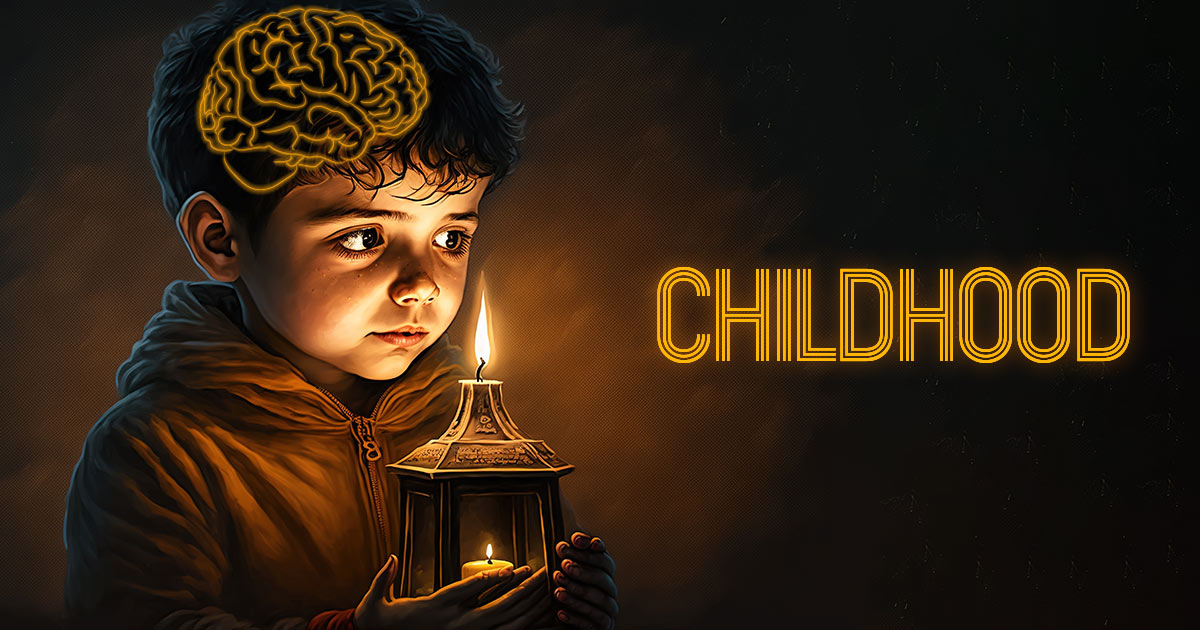Childhood is often regarded as a formative period in one’s life, marked by innocence, wonder, and growth. It is a time of exploration, where every new day brings new adventures and discoveries. This phase of life holds a special place in our hearts, as it molds new perspectives, shapes values, that altogether influence one’s emotional well-being, cognitive abilities, and social skills, and psychological growth in life.
What is Childhood?
Childhood encompasses a significant developmental 1 Childhood. (2019). SAGE Journals. Available from: https://www.researchgate.net/journal/Childhood-0907-5682 phase that begins after infancy, around the age of 2, and continues until the onset of adolescence, typically between 10 and 12 years of age.
This phase can be further divided into distinct stages 2 Beltre, G., & Mendez, M. D. (2022). Child Development. In StatPearls. StatPearls Publishing. Available from: https://www.ncbi.nlm.nih.gov/books/NBK564386/ : early childhood (spanning from 2 years until around 5 or 6 years of age); middle childhood (age range of approximately 6 to 8-10 years of age); and late childhood or preadolescence (two-year period preceding puberty).
It is a critical period during which individuals undergo physical, cognitive, social, and emotional changes that lay the foundation for their future well-being 3 Nunes, C. (2022). Mental Health and Well-Being in Children. Children, 9(8), 1212. https://doi.org/10.3390/children9081212 . Childhood mental health plays a vital role in shaping children’s overall quality of life and future outcomes.
It focuses on the psychological and emotional aspects of a child’s life, including their ability to regulate emotions, develop healthy relationships, capability to deal with stress and acquire problem-solving skills.
How Does Childhood Affect Mental Health
Here are some key 4 Membride H. (2016). Mental health: early intervention and prevention in children and young people. British journal of nursing (Mark Allen Publishing), 25(10), 552–557. https://doi.org/10.12968/bjon.2016.25.10.552 aspects that can impact childhood and mental health functioning:
- Quality relationships with parents or primary caregivers influence a child’s sense of security and ability to form healthy attachments.
- Adverse childhood experiences 5 Herzog, J. I., & Schmahl, C. (2018). Adverse Childhood Experiences and the Consequences on Neurobiological, Psychosocial, and Somatic Conditions Across the Lifespan. Frontiers in psychiatry, 9, 420. https://doi.org/10.3389/fpsyt.2018.00420 such as exposure to trauma or abuse can lead to emotional dysregulation and difficulties in trusting others.
- Social environments such as peer relationships and social interactions within the community significantly contribute to childhood mental health.
- Supportive and inclusive educational settings that promote positive social and emotional support.
- Physical health, including nutrition, exercise, and adequate sleep, plays a significant role in the growth of childhood and mental health functioning.
Read More About Adverse Childhood Experiences Here
Mental Health and Developmental Disorders During Childhood
Some developmental conditions and common mental health 6 Scott, J. G., Mihalopoulos, C., Erskine, H. E., Roberts, J., & Rahman, A. (2016). Childhood Mental and Developmental Disorders. Disease Control Priorities, Third Edition (Volume 4): Mental, Neurological, and Substance Use Disorders, 4, 145–161. https://doi.org/10.1596/978-1-4648-0426-7_ch8 disorders in childhood include:
- Autism spectrum disorder (ASD)- This is characterized by challenges in social interaction, communication, and restrictive/repetitive behaviors. [Read more]
- Attention-deficit hyperactivity disorder (ADHD)- This is marked by difficulties sustaining attention, hyperactivity, and impulsivity. [Read more]
- Anxiety disorder- This involves excessive worry, fear, and avoidance of a situation. [Read more]
- Childhood Depression- This is characterized by persistent sadness, loss of interest, and changes in sleep, appetite, and energy levels.
- Conduct Disorder (CD)- A behavioral disorder characterized by persistent patterns of aggression and breaking societal rules. [Read more]
- Oppositional defiant disorder (ODD)- This is marked by being argumentative and showing disobedient behavior towards authority figures. [Read more]
- Childhood Obsessive-compulsive disorder (OCD)- This is characterized by uncontrollable thoughts (obsessions) and an urge to repeat certain behaviors (compulsions). [Read more]
- Tourette syndrome- This is a neurological disorder 7 Jones, K. S., Saylam, E., & Ramphul, K. (2021). Tourette Syndrome And Other Tic Disorders. PubMed; StatPearls Publishing. Available from: https://www.ncbi.nlm.nih.gov/books/NBK499958/ characterized by repetitive movements or unwanted sounds (tics). [Read more]
- Post-traumatic stress disorder (PTSD)- This occurs after exposure to childhood trauma, leading to distressing thoughts, flashbacks, and emotional dysregulation. [Read more]
Read More About Depression Here
Takeaway
Childhood shapes a person’s physical, cognitive, emotional, and social well-being. Positive experiences such as nurturing relationships, and supportive environments as well as adverse childhood experiences such as childhood trauma or abuse significantly contribute to children’s future mental health outcomes.
By prioritizing their development through love, support, and positive social interaction, parents can help to deal with common mental health disorders in childhood such as anxiety, depression, or PTSD.
Frequently Asked Questions (FAQs)
1. What is the role of parents in childhood development?
Parents and caregivers provide an intimate context for nurturing and protecting children as they help in shaping their personalities, identities, and overall well-being.
2. What are the common challenges faced during childhood?
Common challenges during childhood may include peer pressure, academic stress, bullying, emotional difficulties, and adapting to new environments.
3. What is the importance of play in childhood mental health?
Play is essential for a child’s development as it promotes creativity, imagination, social skills, problem-solving abilities, and emotional well-being. It allows children to learn, explore, and make sense of the world around them.















